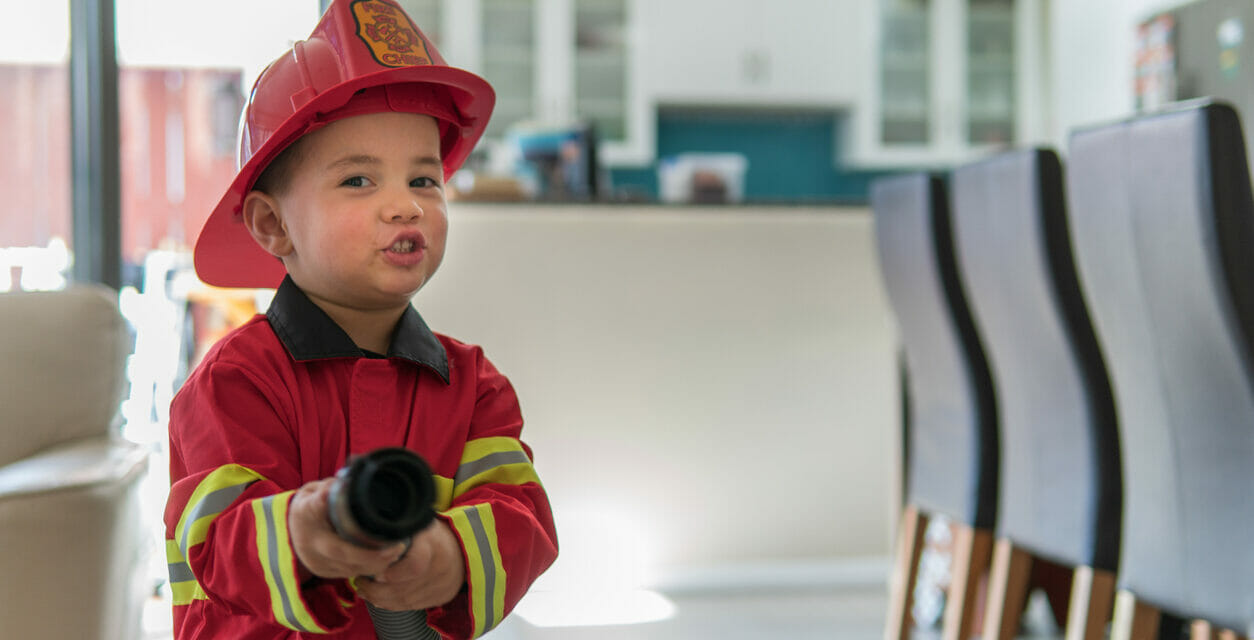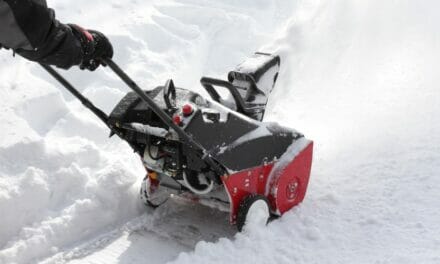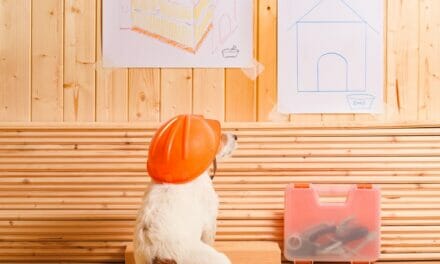How to make your home fire-safe, plus get fire prevention tips, fire recovery services info, and more.
It’s easy to dismiss fire safety and fire prevention as something that you can put off, but it’s important to know how to protect your family and home from fire damage before disaster strikes. Here are our top tips for home fire safety, fire safety tips, and what to do if fire ever strikes your home.
The best materials and remodeling tips for improved fire prevention
Keeping your home and family safe from fires starts with prevention, which is where the right fire-resistant materials can make a big difference. Here are some easy ways to protect your home from fires and fire damage:
If you’re building or remodeling a home, consider brick, stucco, or stone siding, and tile or metal roofing materials. Metal-framed windows are naturally fire-retardant.
Keep flammable debris away from your home: remove leaves from gutters and prune trees and shrubs on an annual basis.
Keep important documents in a fire-proof safe.
Replace traditional candles with battery-powered flame-less candles.
Install smoke detectors or monoxide detectors on the ceiling of every floor in your home and check the batteries twice a year.
Keep at least one working fire extinguisher in your home, especially in the kitchen. Having a fire extinguisher on each floor is ideal.
Space heaters, particularly the older kind with open heating elements, can be dangerous. Keep anything flammable well away from a heater, and make sure that the heater is not in a place where it could be knocked over by a pet or child.
Light bulbs in lamps and nightlights can get hot enough to set things on fire, particularly fabric. Consider installing low-heat LED bulbs in table lamps, particularly in children’s bedrooms.
Replace or repair faulty appliances, don’t overload outlets (a sign is fuses that trip on a regular basis) and hire an electrician to fix any old wiring in your home.
Clean out dryer lint trap after every load and get your dryer vent cleaned on a regular basis.
Check for tree limbs that hang above your power lines or that are starting to grow between power lines. Most power companies will come and trim the trees for you at no extra cost.
Protect your home from wildfires by creating a border around it with gravel, concrete and fire-retardant plants that are high in moisture content and low-resin, such as ornamental strawberry, French lavender, and yellow ice plants.
What to teach your kids about fire safety
Teach kids about the importance of fire prevention, such as not to play with matches, and keeping lights away from curtains and other easily flammable materials. It’s also important to go through different fire scenarios with kids and teach them what to do in case of a fire.
Teach older children how to use a fire extinguisher and have a plan for at least two ways to escape a home fire.
Practice a family fire drill so kids know what to do if a fire breaks out in your home.
Teach kids to recognize a smoke alarm and to keep low on the floor and get out of the home not just when there’s fire, but also smoke.
Don’t play with matches or lighters.
Run extinguished matches under water before throwing them away.
Never leave candles or incense burning unattended.
Don’t play near fireplaces or stoves.
Don’t use elevators. It’s important that your kids understand an elevator can be a dangerous place when a fire occurs. If you live in an apartment building, make sure your children know to use the stairs instead of an elevator.
Keep flammable objects like dish towels and oven mitts away from the stove.
One of the classic fire safety tips for kids is to stop, drop, and roll if clothes catch fire. Show kids what this looks like and have them practice it with you.
If there are no adults around, kids escaping a fire should find a safe place like a neighbor’s house and call 911. Don’t ever call 911 from inside a burning building.
What to do when a fire breaks out in your home It’s important to have a plan for if the worst-case scenario ever happens and a fire does break out in your home.
First of all: leave your belongings. We’re all attached to our possessions, but nothing is as important as your life when it comes to fire safety. In case of a fire, leave everything behind and get out.
Store a fire ladder in each adult bedroom. Aluminum fire ladders can help you escape in case of a fire in a multi-story home. Only adults should operate fire ladders, so put them in rooms accessible by adults who can help children escape an indoor house fire.
Teach children to crawl to safety and cover their nose and mouth with fabric when escaping a fire.
Set a designated meeting spot for your family to meet—such as at the end of a driveway or by a mailbox—when there’s an emergency like a fire.
Lastly, don’t panic. If you have an escape plan, it’s important that you follow the plan and help kids and pets escape safely.
What you need to know about fire recovery services
It’s also good to be informed about fire recovery options and services before a crisis hits.
It’s important to stay out of fire-damaged homes until authorities say it’s safe to enter. If a building inspector has placed a color-coded sign on the home, don’t enter it until you get more information, advice, and instructions about what the sign means and whether it is safe to enter your home.
If you have children, leave them with a relative or friend while you conduct your first inspection of your home after the fire. The site may be unsafe for children, and seeing the damage firsthand may upset them.
Check the outside of your home before you enter. Look for loose power lines, broken or damaged gas lines, foundation cracks, missing support beams or other damage. Damage on the outside can indicate a serious problem inside. Ask a building inspector or contractor to check the structure before you enter.
Contact your insurance agent. Don’t discard damaged goods until an inventory has been taken. Save receipts for money spent relating to fire loss. Your insurance agent may provide immediate help with living expenses until you are able to return home and may offer assistance for repairs.
Take photographs of the damage. You may need these to substantiate insurance claims later.
When in doubt, hire specialist pros to do cleanup from smoke, fire, or water damage. If the electrical, plumbing, or HVAC systems are damaged, leave it up to licensed pros to replace or repair those systems.
Practice the three Ps of fire safety: prevention, preparation, and planning. Use the right fire-retardant materials in your home, replace dangerous electrics and appliances, teach kids how to prevent fires, and have a solid escape plan. With these tips, you and your family will be as safe as possible if fire breaks out in or around your home.
* U.S. Fire Administration Fire Estimate Survey: https://www.usfa.fema.gov/data/statistics/
























